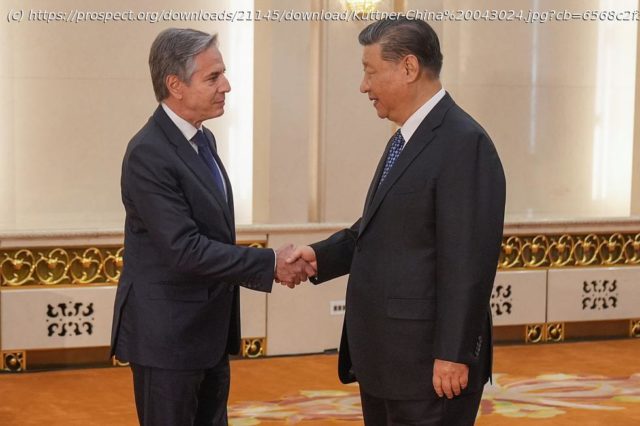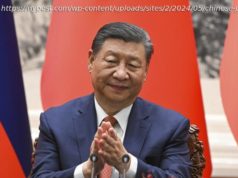Can Biden find the right mix of toughness and restraint?
Secretary of State Tony Blinken returned from Beijing late last week before he refueled and headed back out to the Middle East. His five-hour meeting with Chinese leader Xi Jinping was a combination of well-choreographed minor conciliatory gestures coupled with tough warnings. “Russia would struggle to sustain its assault on Ukraine without China’s support,” Blinken said at a predeparture news conference on Friday. “I made clear that if China does not address this problem, we will.”
U.S.-China conflict is in a new phase where the Biden administration has recognized that the two countries are in a protracted struggle for economic primacy and military advantage. It’s about time. This has been China’s view for centuries.
There are two core problems standing in the way of any sort of U.S.-China rapprochement. One is that China has become more authoritarian under Xi, not less. Militarily, China has ended democracy in Hong Kong, engaged in expansionist provocations in the South China Sea, and made menacing noises against Taiwan.
China uses nominally private companies as instruments of the state. It spies on its citizens. The idea that the U.S. can trust China not to spy on U.S. companies and U.S. citizens as part of a general entente is an illusion.
(The U.S. government also spies on its own citizens, but in a far more limited way. Domestically, the bigger menace is corporate surveillance capitalism.) Congress’s recent bipartisan enactment of the requirement that TikTok find a new, non-Chinese owner, or be banned from operating in the U.S., is just the beginning of a broader crackdown against Chinese spying.
THE SECOND OBSTACLE TO ENTENTE is increased Chinese mercantilism, specifically the pattern of excess production across a broad range of industries. Against these state-led activities, even Biden’s trillion-dollar industrial policies cannot do very much.
Take the case of cars. China’s production capacity is currently about 40 million autos a year, but China sells only about half of them domestically. Of the remainder, some cars go to Russia but the rest are dumped on global markets at far below the cost of production. Chinese auto exports have roughly quintupled, to about five million cars annually, over just the past three years. This has led to a price war with Tesla and other EV makers in export markets such as Europe.
Chinese subsidies range from interest rates of zero or below, and subsidized steel and batteries for electric cars, to direct government support. According to The Wall Street Journal, BYD, China’s largest automaker and the world’s largest producer of EVs, received $3.5 billion in government subsidies between 2018 and 2022.
Biden is the first president since Franklin Roosevelt to embrace explicit industrial policies to promote domestic technological advances and production. But the U.S. will never match the extent of explicit subsidies used by China.
The necessary measures to prevent China from dominating global markets with policies that violate any definition of free trade or fair trade will need to be more aggressive trade policies, such as higher and more consistent tariffs. But unless other nations embrace similar measures, China’s subsidized excess capacity will end up underpricing unsubsidized U.S. exports, such as Tesla, in third-country markets.






